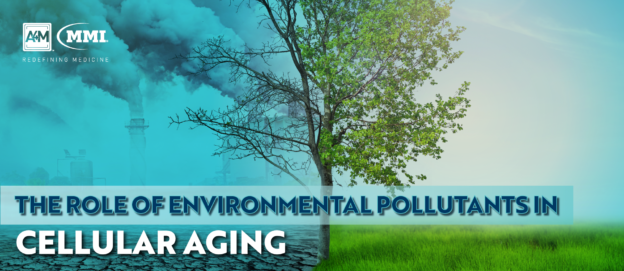Disease, premature death, and early signs of aging have all been linked to the growing number of environmental pollutants affecting the global population. Recent research has found that previous estimates of deaths caused by environmental pollution have been greatly underestimated. The study revealed a total of 8.8 million deaths attributable to air pollution each year worldwide. The detrimental effects of this ubiquitous issue on both environmental and human health are well-known, however, new research aims to determine whether exposure to pollutants can accelerate aging at the cellular level.
Certain environmental pollutants have been found to cause mitochondria to release oxygen species prone to damaging DNA and inducing inflammation. Others can have a significant effect on telomere length– a determining property of cellular aging. Shortened telomeres are characteristic of aging cells, while abnormally long telomeres are often related to cancerous cells. Previous research has aimed to evaluate the impact of air pollution on telomere length, reporting consistent results supportive of the association between shorter telomeres and environmental pollution.
Environmental Pollutants and Cellular Aging
Led by Dr. Michelle Plusquin, a team of researchers at Hasselt University in Belgium aimed to identify which environmental exposures are associated with the two hallmarks of cellular aging – mitochondrial DNA content (mtDNA) and telomere length in adults. Dr. Plusquin and colleagues analyzed the blood and urine samples from 175 adult participants of the Flemish Environment and Health Study. The team assessed mitochondrial DNA content, telomere length, and the corresponding effects of a set of environmental pollutants using multipollutant models.
Results revealed a positive association between urinary cadmium, serum hexachlorobenzene, perfluorooctanesulfonic acid, and mitochondrial DNA content. Higher levels of urinary copper and serum perfluorohexane sulfonic acid were found to decrease mtDNA and shorten telomeres, while other pollutants increased the length of telomeres. These findings indicate that certain environmental pollutants can impact and accelerate cellular aging, although more extensive research is necessary to identify the underlying mechanisms of action and biological effects.
Prevention and Neutralization of Adverse Effects
As a global public health issue, air pollution damage is difficult to prevent without worldwide governmental intervention. The reduction of pollution has a positive effect on health, particularly in susceptible individuals, according to past clinical studies. In 2009, the first population-based study revealed significant improvements in life expectancy related to the reduction of particulate matter concentrations. The results were later confirmed by a Swiss study that found reduction in respiratory symptoms associated with lowered fine-particle concentrations.
Despite numerous studies implicating environmental pollutants as noxious to human health, air pollution remains a critical issue affecting millions of people around the globe. While current efforts aimed at reducing air pollution may prevent further environmental changes, they cannot reverse existing damage nor prevent adverse effects on the population. However, several studies show promising results for reducing air pollution susceptibility and neutralizing effects of pollutants with dietary supplements. Certain nutrients such as B vitamins, omega-3 fatty acids, vitamin C, vitamin E, and vitamin D have demonstrated protective effects against air pollution damage. In polluted environments, a healthy diet with increased antioxidant intake may reduce pollution-related oxidative stress and inflammation, both of which can lead to the development of chronic diseases.
Current research reveals a growing number of detrimental effects associated with environmental pollution. Not only can air pollutants lead to the development of respiratory conditions such as asthma, but they can also cause premature death and increase the risk of cardiovascular disease in susceptible individuals. Alongside new data on the impact of pollutants on accelerated cellular aging, the aforementioned studies suggest the urgent need for increased pollution reduction efforts and improved prevention strategies.

